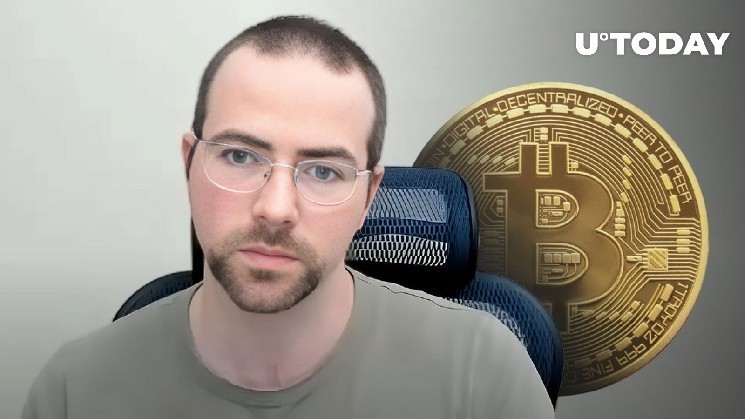Bitcoin Reformation Author Tuur Demeester: Ethereum (ETH) Founders Lied About Scaling

Legendary Bitcoiner Tuur Demeester of Adamant Research, an advisor to the largest Bitcoin-centric development studio Blockstream, accuses Ethereum (ETH) developers of lying about the scaling prospects of Ethereum’s L1. Here’s why some other cryptocurrency experts are not excited about the concept of proto-danksharding.
Stealthy pivot instead of scaling L1: Tuur Demeester slams Ethereum (ETH) devs
Core developers of Ethereum (ETH), the second largest blockchain, lied about its scaling opportunities from the very beginning. All initiatives in this field were actually an «on-chain scaling narrative,» Mr. Demeester stated in a recent tweet.
Ethereum founders lied about scaling from the start. While bitcoiners took years to build L2, ETH devs sneered and pumped ETH using an on-chain scaling fairy tale. Later they stealthily pivoted. What’s next? You know what they say: there’s no way to tell a liar’s hard-fork. pic.twitter.com/Ak1aGIp0tg
— Tuur Demeester (@TuurDemeester) June 7, 2023
As such, all announcements about Etheruem (ETH) scaling concepts outside L2 solutions were just made to «pump-and-dump» the price of Ether, an asset of Ethereum (ETH) blockchain.
With this post, Tuur Demeester agreed with the skepticism of James Prestwitch, a founder of Storj (STORJ) protocol. Mr. Prestwitch recalled that the approach to on-chain scaling evolved from «original» sharding into a «block-as-a-shard» solution designed to make rollups by third-party devs do all the legwork.
Meanwhile, Demeester stressed that Bitcoiners (BTC) spend «years» building real second-layer solutions.
As covered by U.Today previously, recently, Ethereum (ETH) core developers approved the activation of the Cancun-Deneb upgrade in Q4, 2023.
The upgrade is designed to supercharge Ethereum (ETH) by proto-danksharding, a resource-efficient method of data logistics optimization.
What about Bitcoin’s (BTC) L2s?
Cancun-Deneb (or Cancun) is designed to make the computational costs for all Ethereum (ETH) L2s lower and, therefore, make the blockchain more rollup-friendly.
While Bitcoiners (BTC) in general supported Demeester’s position, some of his followers decided to strike back. They immediately started asking him about the traction of Lightning Network, the most popular Bitcoin (BTC) L2 scaling solution on payment channels.
Ethan Kravitz of AGE Crypto Asset Investment Funds stressed that LN failed to achieve massive adoption so far:
Bitcoiners have been pumping Lightning since 2017 at least. It’s still unusable though looks like Lightspark is hopefully fixing that.
Some of Demeester’s opponents also called LN a «coming-soon» protocol with 100 users maximum.






 Bitcoin
Bitcoin  Ethereum
Ethereum  Tether
Tether  USDC
USDC  TRON
TRON  Dogecoin
Dogecoin  Cardano
Cardano  Bitcoin Cash
Bitcoin Cash  Chainlink
Chainlink  Monero
Monero  LEO Token
LEO Token  Stellar
Stellar  Zcash
Zcash  Litecoin
Litecoin  Hedera
Hedera  Dai
Dai  Cronos
Cronos  Tether Gold
Tether Gold  OKB
OKB  Ethereum Classic
Ethereum Classic  KuCoin
KuCoin  Gate
Gate  Algorand
Algorand  Cosmos Hub
Cosmos Hub  VeChain
VeChain  TrueUSD
TrueUSD  Dash
Dash  Tezos
Tezos  Stacks
Stacks  IOTA
IOTA  Basic Attention
Basic Attention  Theta Network
Theta Network  NEO
NEO  Decred
Decred  Synthetix
Synthetix  Qtum
Qtum  Ravencoin
Ravencoin  DigiByte
DigiByte  0x Protocol
0x Protocol  Nano
Nano  Zilliqa
Zilliqa  Siacoin
Siacoin  Numeraire
Numeraire  Waves
Waves  BUSD
BUSD  Status
Status  Pax Dollar
Pax Dollar  Enjin Coin
Enjin Coin  Ontology
Ontology  Hive
Hive  Lisk
Lisk  Steem
Steem  Huobi
Huobi  NEM
NEM  OMG Network
OMG Network  Bitcoin Gold
Bitcoin Gold  Augur
Augur  Ren
Ren  HUSD
HUSD